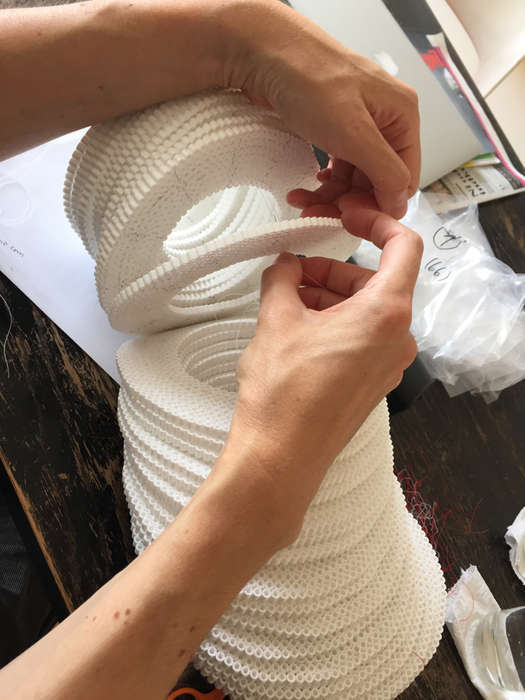HoMA (2015)
As the name suggests, HoMA is a sort of ‘home museum’ (a branch of MoMA?). A series of white cylinders are placed on a white-painted piece of furniture – a hybrid of a classic exhibition podium and a fruit stand in the high street (or on the side of a country road). The differently sized cylinders are made of small, white plastic tubes, so-called Hama beads, which can be used to make melted bead craft projects.
HoMA was created for the HOMELINESS exhibition, where designers, architects and craft makers exhibited in a functioning home in the centre of Copenhagen with the purpose of examining the home as a phenomenon and as an exhibition venue. Or, to quote the exhibition catalogue: Craft objects are traditionally seen as objects with a utilitarian function, but the field is moving towards a broader and more artistically reflective approach that is often presented in a traditional gallery space. But what happens when these types of craft objects are returned to the home context?







